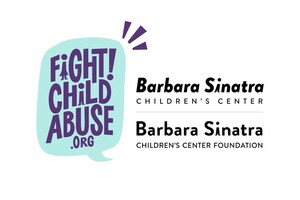Survey Also Finds Parents Mistakenly Believe Strangers Pose Greatest Risk As Perpetrators; Parents Want More Child Sexual Abuse Education In Schools, As Early As Pre-K
PALM SPRINGS, Calif., April 11, 2022 /PRNewswire/ -- Despite all the awareness and advances made over the past few years by the #MeToo movement on gender-related sexual abuse, when it comes to child sexual abuse men are still somewhat oblivious.
Indeed, a new survey from the Barbara Sinatra Children's Center – a national research, treatment and programming center dedicated to ensuring every child has a right to a normal, healthy and secure childhood -- has found that of all the respondents who think victims are exaggerating their childhood experience of sexual abuse, three-quarters are men. In fact, men are three times more likely than women to believe that the problem of child sexual abuse is exaggerated and that the victim is motivated by money, and two times more likely than women to feel that the survivor has recovered just fine from the abuse.
"These findings are, for sure, disturbing," said John Thoresen, BSCC's director and executive officer. "But they also clearly point to the critical need for more and better education around child sexual abuse prevention."
Thoresen cited the other significant findings of the survey – which was created in collaboration with nationally recognized scholar and child sexual abuse researcher, Dr. Jon R, Conte, PhD., Professor Emeritus at the University of Washington – as further evidence of the need for more dedicated resources to educate and empower youth and adults on prevention of what too often is a common experience of American children and adults abused in childhood.
These findings include:
- While numerous studies show that 90% of child sexual abuse victims know their perpetrators, three out of four adults in the survey said that strangers pose a serious risk to their children, which is a higher perceived risk than any other type of person, i.e. neighbors, family members, clergy, and/or coaches.
- At the same time, adults believe there is a lower perceived risk to their own family members, as well as from adults they know personally including neighbors, religious leaders and family friends.
- Just about half of respondents prefer that child sexual abuse education occur in schools between pre-K and the third grade. Also, the majority of adults are grateful that schools tackle the issue and want schools to have more resources to do so. These findings seem to belie efforts in a number of states to ban or limit teaching topics in schools pertaining to sex.
- Seventy percent of parents of minors say they have discussed sexual abuse prevention with their children, with 50% doing so on multiple occasions.
Of the respondents who are parents of minor children, the majority expressed a desire to learn more about prevention, how to encourage their children to tell them if something happens and what they can do to monitor and prevent child sexual abuse. Moreover, nearly nine in 10 respondents said that educating youth about appropriate interpersonal behavior is the most effective way to protect children from sexual abuse. - Sixty-eight percent of Americans know someone who has been sexually abused before turning eighteen years of age and 26% report they were themselves abused as a child.
Conte commented that given the large number of Americans who are abused or know someone who was abused, and the overwhelming support for prevention education in schools, "it is surprising that politicians and school leaders have not gotten the message that universal child sexual abuse prevention in schools is a popular and much desired topic among Americans."
In fact, Conte pointed to the fact that the majority of respondents said that concepts such as teaching children to say "stop" to any uncomfortable touch, to tell someone if they feel uncomfortable with any kind of touch, and the difference between a trusted adult and someone who can't be trusted were "absolutely necessary" or "very appropriate."
Thoresen explained that among the resources that are currently available to achieve these goals, BSCC has produced animated videos through its fightchildabuse.org initiative https://fightchildabuse.org/ that provide an excellent way to open the discussion with kids of all ages. These videos have been viewed by 100 million children worldwide and generated over 48 million individual and group viewings on YouTube throughout the United States and abroad. Other organizations that offer easy-to-comprehend materials include the Rape, Abuse, Incest National Network RAINN (https://www.rainn.org/), National Sexual Violence Resource Center (https://www.nsvrc.org/preventing-child-sexual-abuse-resources, and DarknessToLight (https://www.d2l.org)
The 1000 respondents to the survey represent a scientific, representative sample of American adults in the workforce between the ages of 18 and 65. Results have a margin of error of 3%, with 95% confidence. The age breakdown by generation aligns to the US census 18-65 population distribution: 15% Gen Z, 34% Millennial, 30% Gen X, and 21% Baby Boom generation. Gender is evenly split. Geographic divisions generally align to US population density. 75% of respondents are white; 25% are minority or multiracial. 53% are parents. Among them, 33% have children 0 to 6 years-old, 45% have children from 7 to 12 years-old, and 32% have children from 13 to 17 years-old.
Full survey results can be found: https://www.pollfish.com/dashboard/results/283566152/-1298431405
Founded in 1986 by Barbara and Frank Sinatra, the Barbara Sinatra Children's Center is dedicated to ensuring every child's right to a normal, healthy and secure childhood. Since its creation, about 23,000 children have received outpatient mental health and counseling services at the Center. The Center provides individual, group, and family therapy and special programs that address issues associated with children suffering the effects of child abuse and neglect. An estimated 700 children are counseled annually on an outpatient basis, and no child is ever turned away because of a family's inability to pay. For more information, visit BarbaraSinatraChildrensCenter.org.
SOURCE The Barbara Sinatra Children's Center

WANT YOUR COMPANY'S NEWS FEATURED ON PRNEWSWIRE.COM?
Newsrooms &
Influencers
Digital Media
Outlets
Journalists
Opted In






Share this article